Bài giảng Phương pháp giảng dạy Tiếng Anh - Chapter 7: How to teach reading
1. Why teach reading?
Language acquisition
Providing good models for writing
Providing opportunities to study language:
-vocabulary, grammar & pronunciation
-ways to construct sentences, paragraphs
Introducing speaking interesting topics,
discussion, imaginative responses,
fascinating lessons
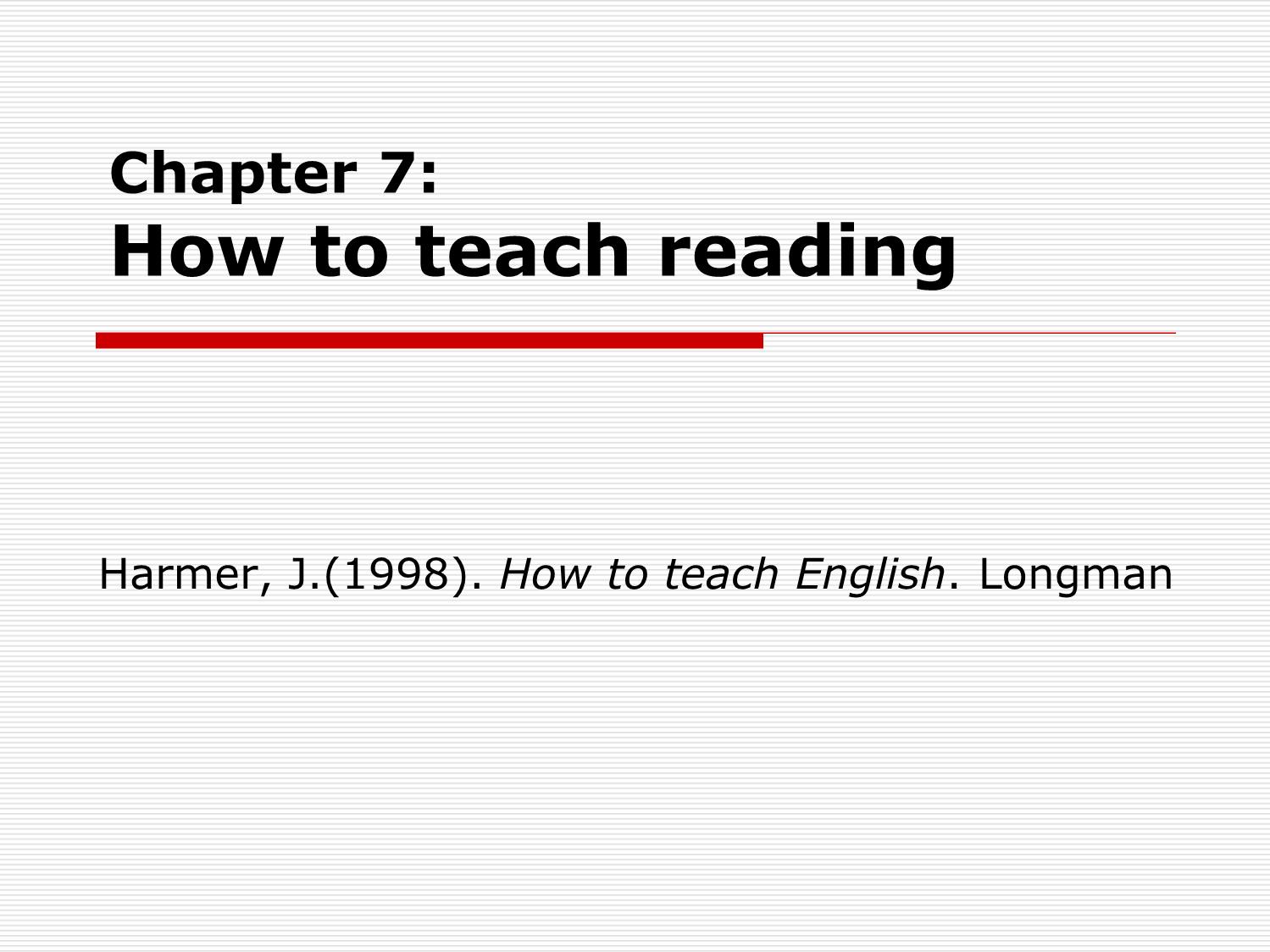
Trang 1
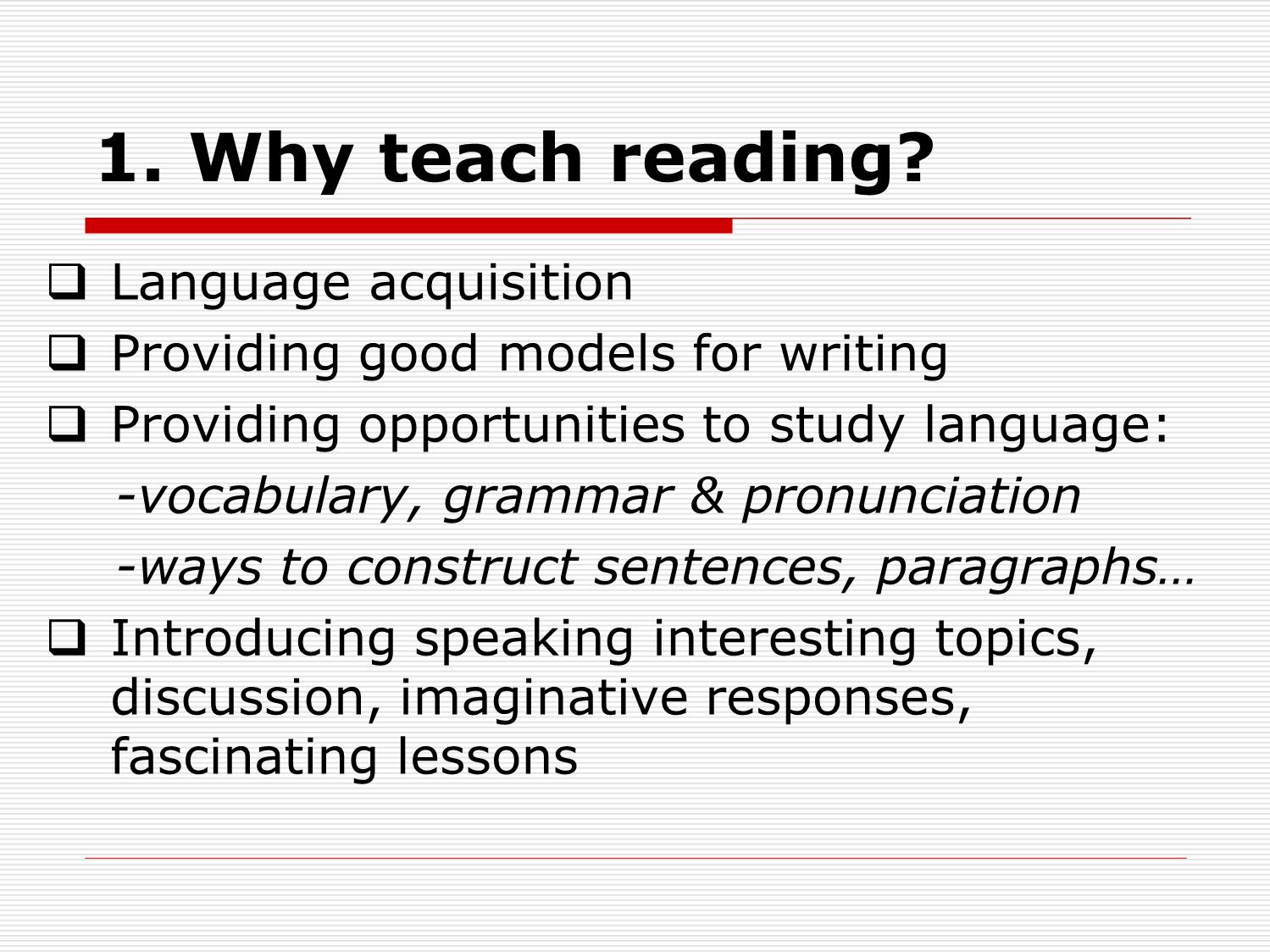
Trang 2
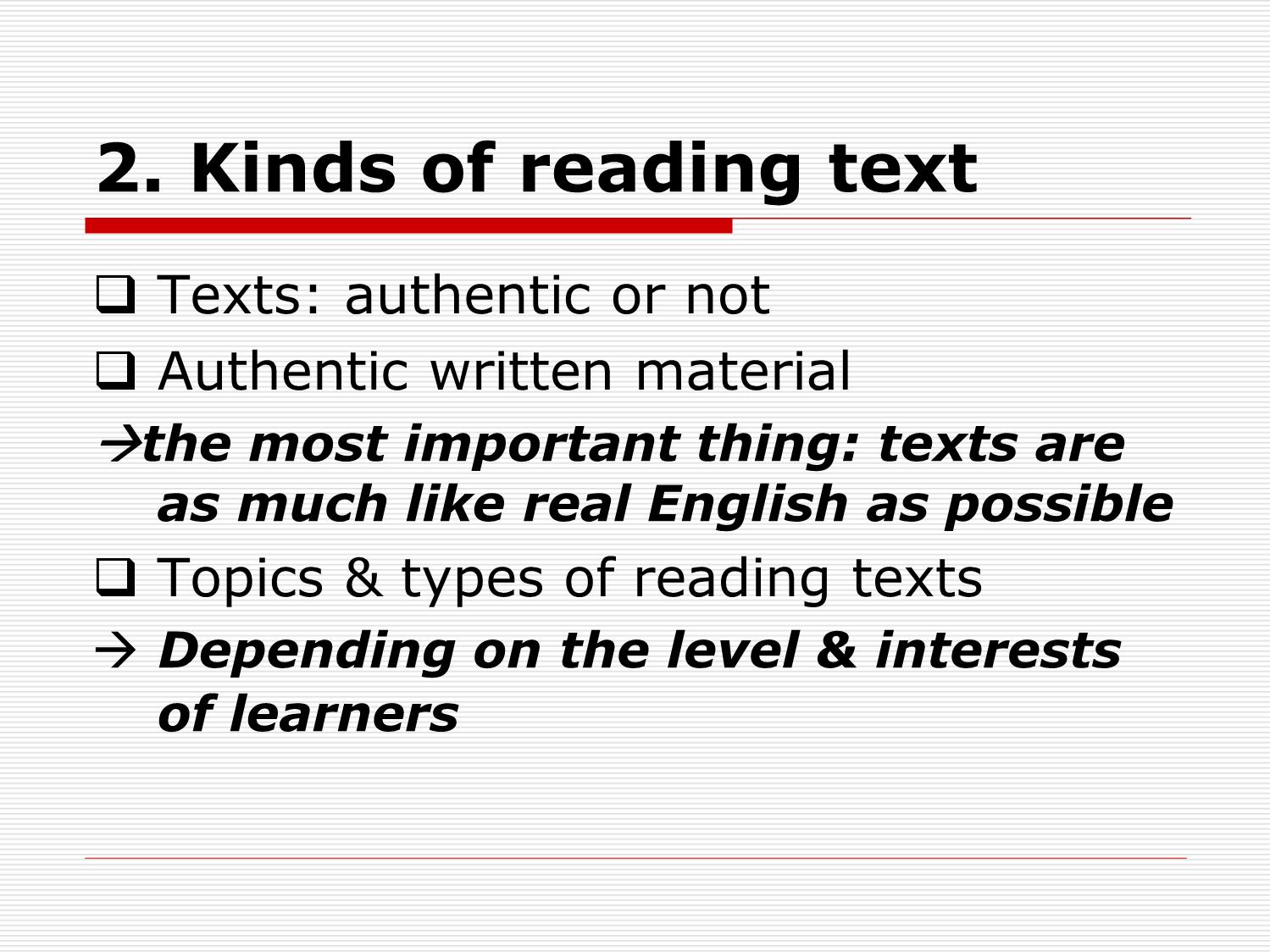
Trang 3
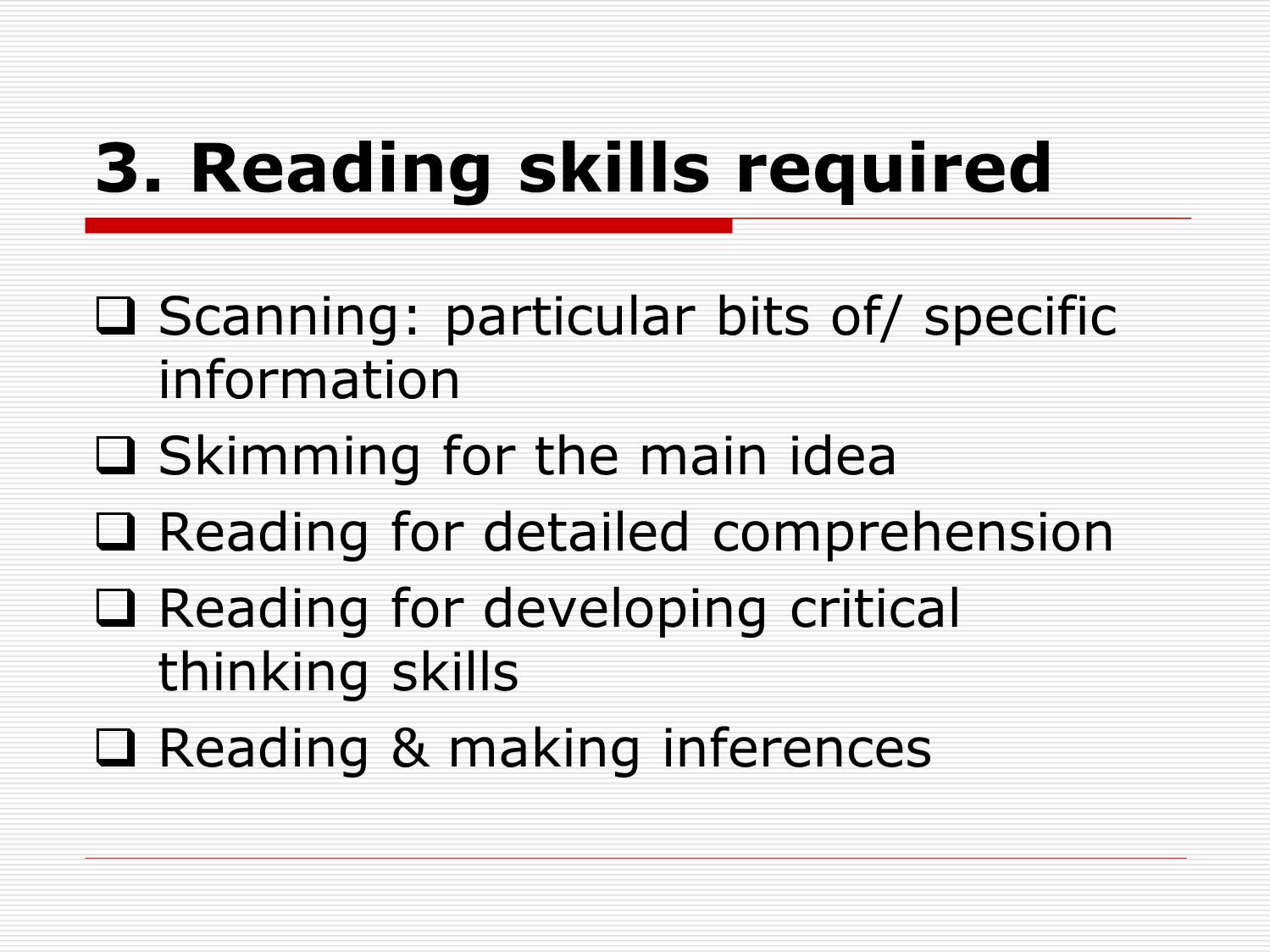
Trang 4
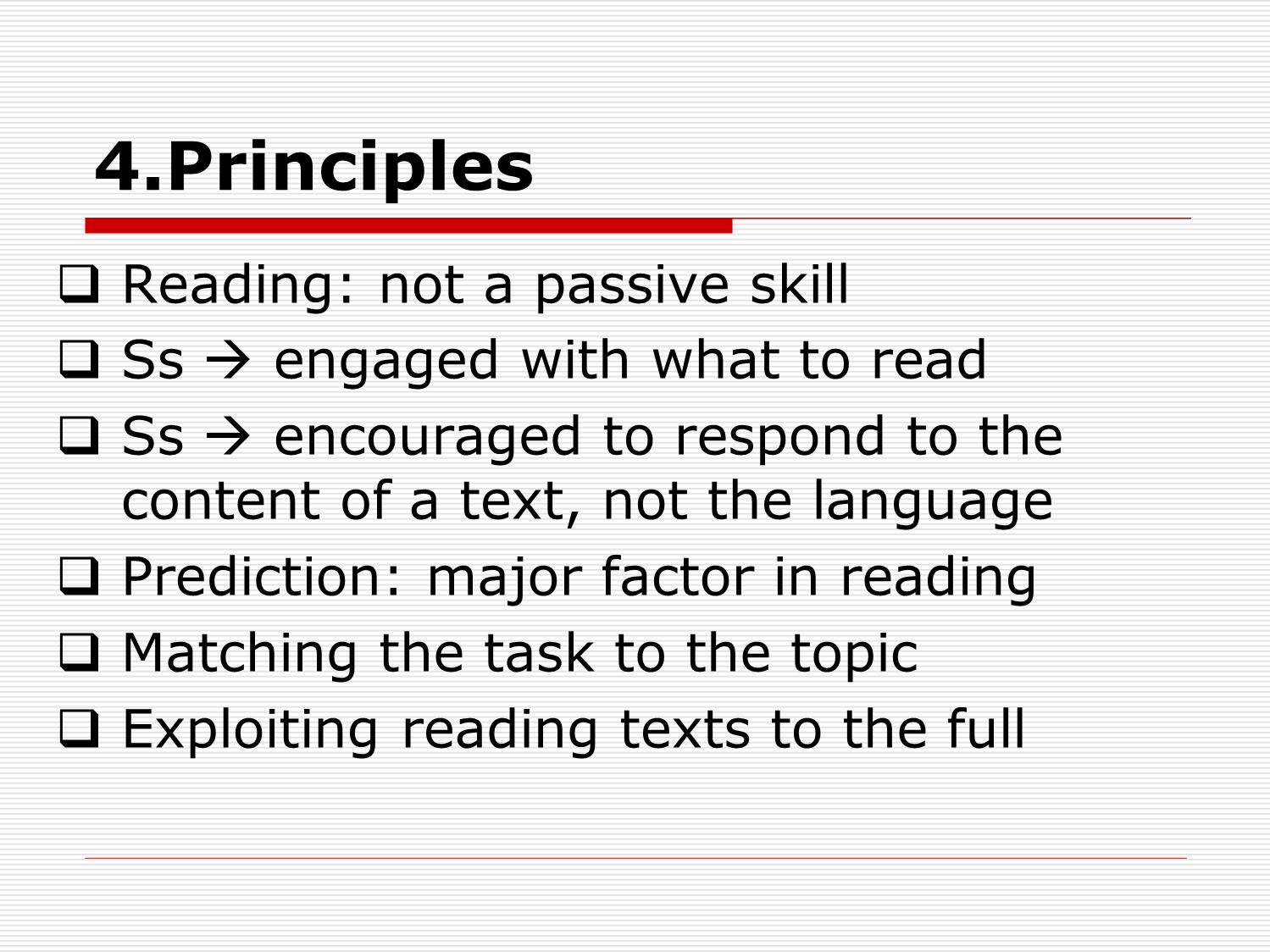
Trang 5
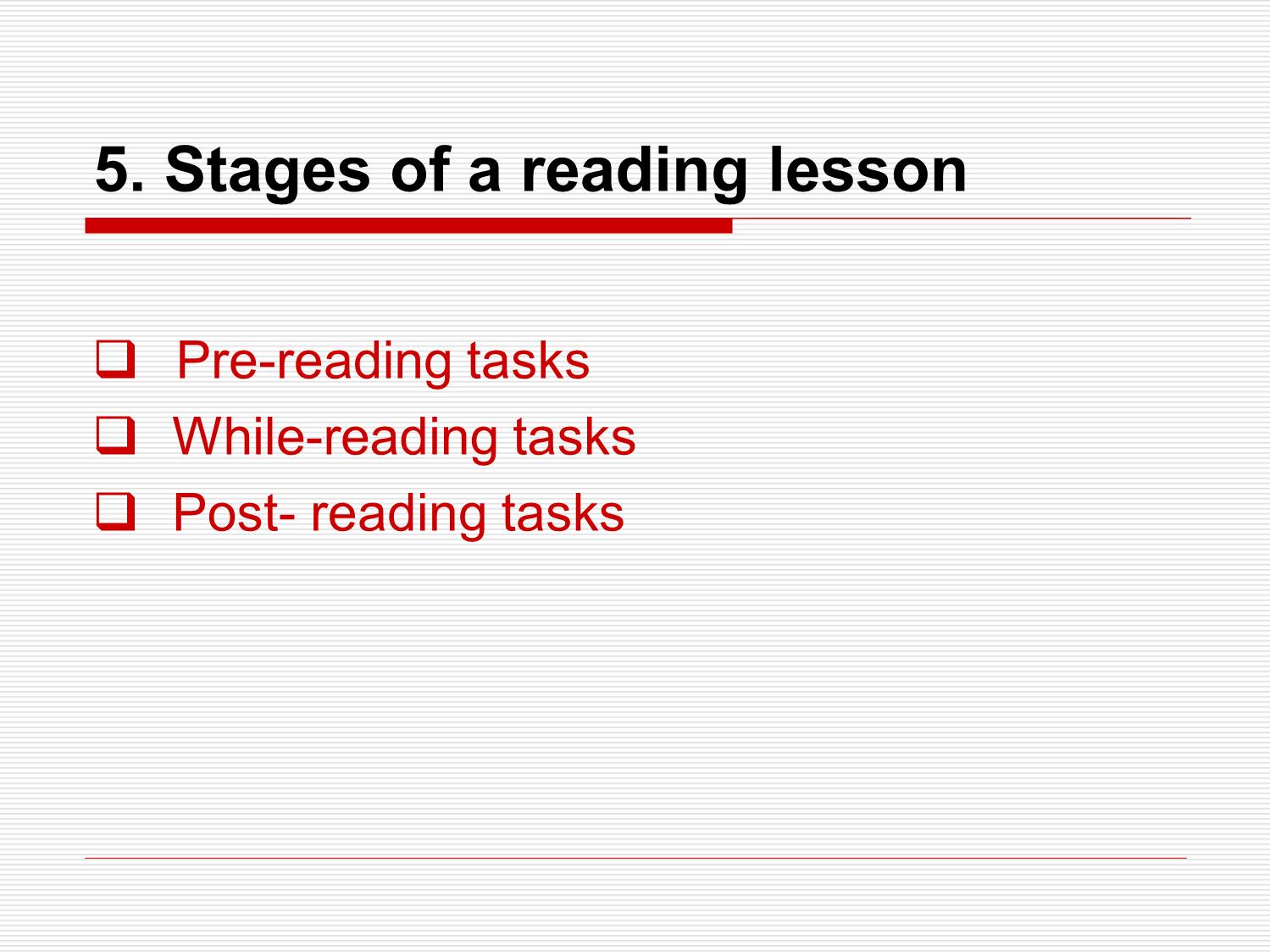
Trang 6
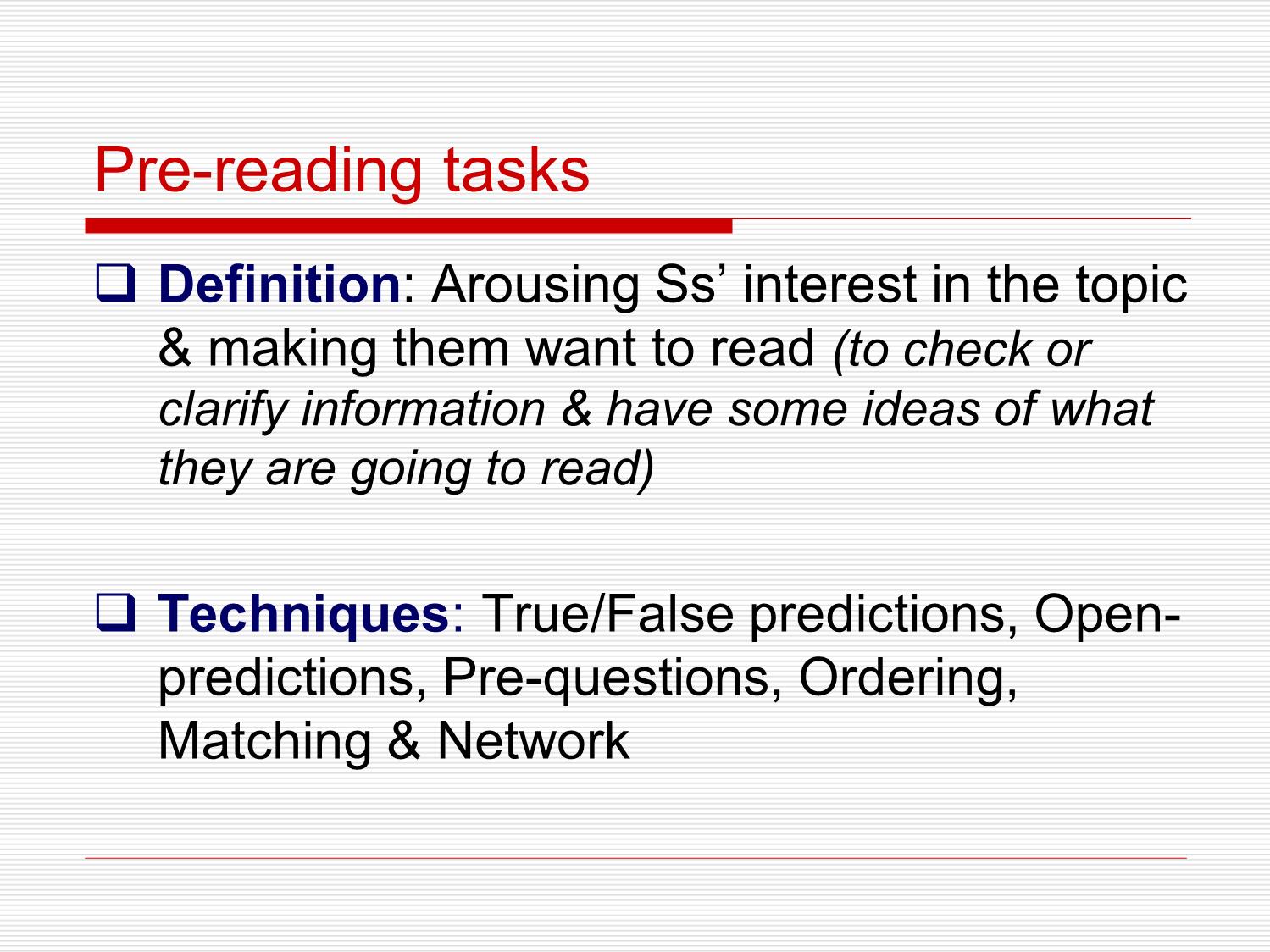
Trang 7
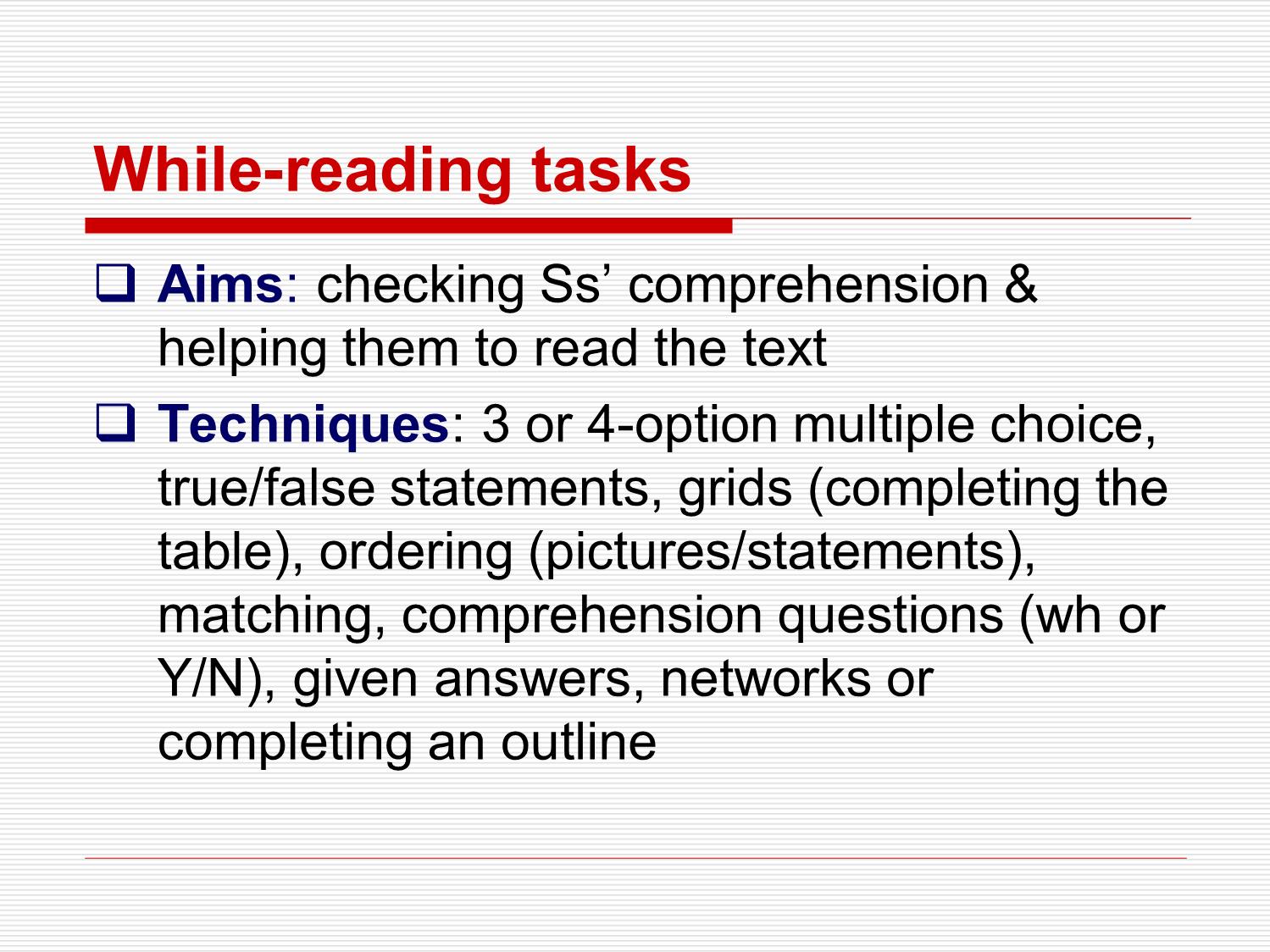
Trang 8
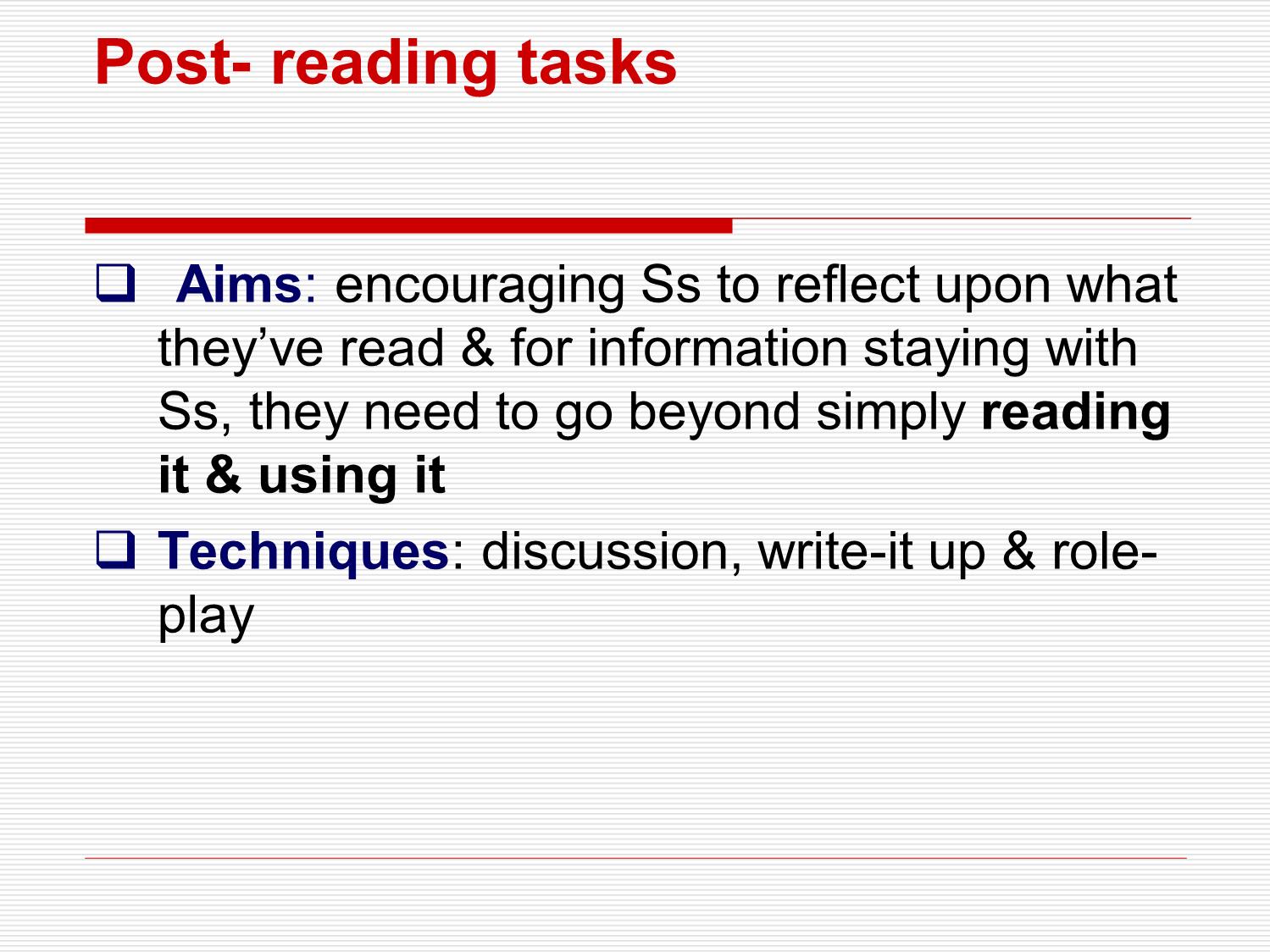
Trang 9
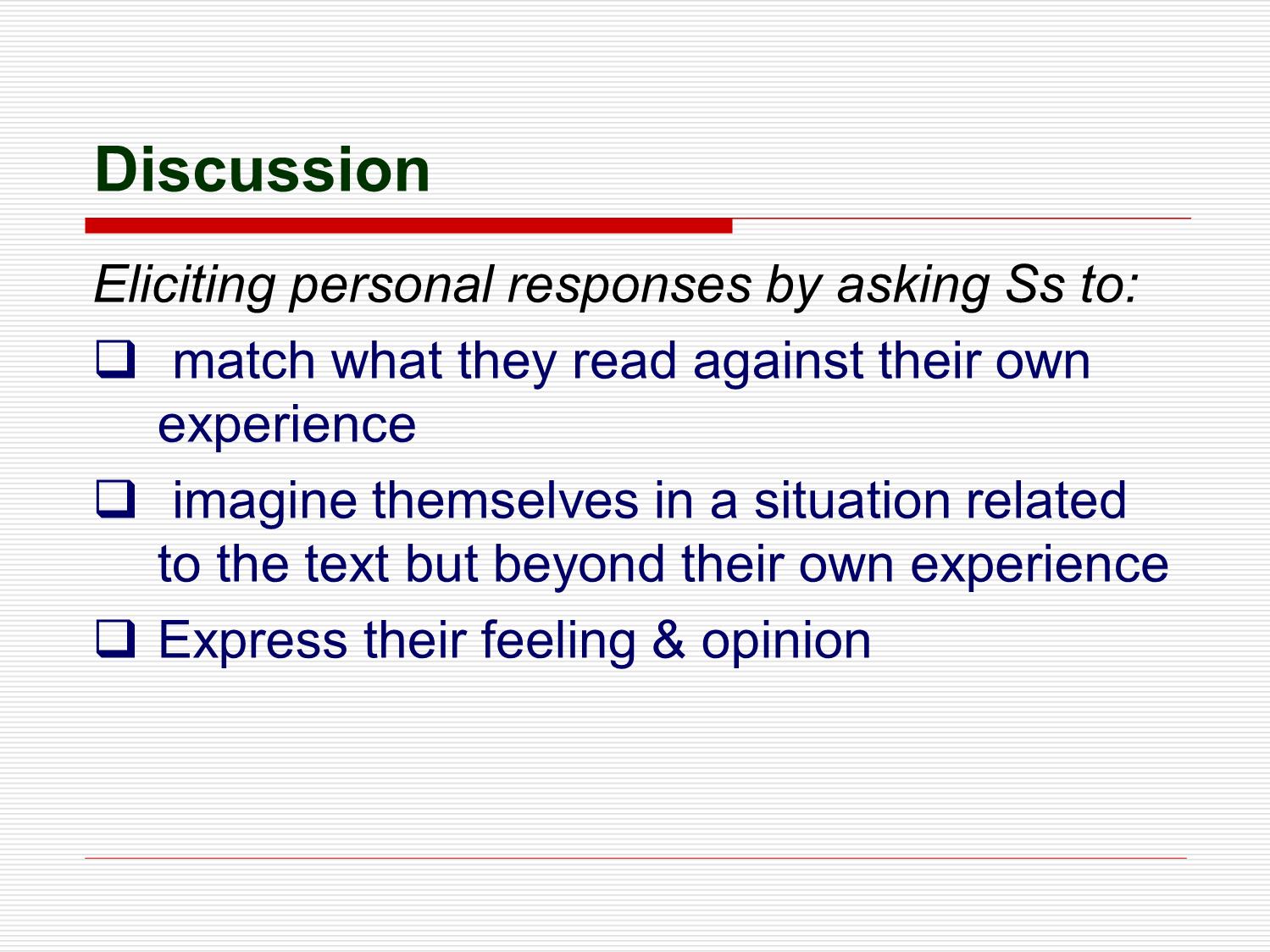
Trang 10
Tải về để xem bản đầy đủ
Bạn đang xem 10 trang mẫu của tài liệu "Bài giảng Phương pháp giảng dạy Tiếng Anh - Chapter 7: How to teach reading", để tải tài liệu gốc về máy hãy click vào nút Download ở trên
Tóm tắt nội dung tài liệu: Bài giảng Phương pháp giảng dạy Tiếng Anh - Chapter 7: How to teach reading
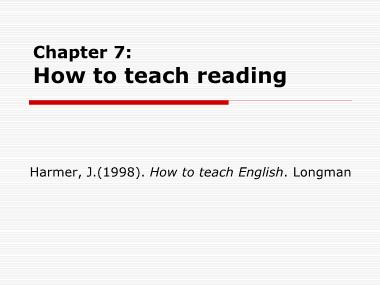
Chapter 7: How to teach reading Harmer, J.(1998). How to teach English. Longman 1. Why teach reading? Language acquisition Providing good models for writing Providing opportunities to study language: -vocabulary, grammar & pronunciation -ways to construct sentences, paragraphs Introducing speaking interesting topics, discussion, imaginative responses, fascinating lessons 2. Kinds of reading text Texts: authentic or not Authentic written material the most important thing: texts are as much like real English as possible Topics & types of reading texts Depending on the level & interests of learners 3. Reading skills required Scanning: particular bits of/ specific information Skimming for the main idea Reading for detailed comprehension Reading for developing critical thinking skills Reading & making inferences 4.Principles Reading: not a passive skill Ss engaged with what to read Ss encouraged to respond to the content of a text, not the language Prediction: major factor in reading Matching the task to the topic Exploiting reading texts to the full 5. Stages of a reading lesson Pre-reading tasks While-reading tasks Post- reading tasks Pre-reading tasks Definition: Arousing Ss’ interest in the topic & making them want to read (to check or clarify information & have some ideas of what they are going to read) Techniques: True/False predictions, Open- predictions, Pre-questions, Ordering, Matching & Network While-reading tasks Aims: checking Ss’ comprehension & helping them to read the text Techniques: 3 or 4-option multiple choice, true/false statements, grids (completing the table), ordering (pictures/statements), matching, comprehension questions (wh or Y/N), given answers, networks or completing an outline Post- reading tasks Aims: encouraging Ss to reflect upon what they’ve read & for information staying with Ss, they need to go beyond simply reading it & using it Techniques: discussion, write-it up & role- play Discussion Eliciting personal responses by asking Ss to: match what they read against their own experience imagine themselves in a situation related to the text but beyond their own experience Express their feeling & opinion Write - it- up summarizing the main ideas of the text by using their own words drawing their own conclusion Role-play giving further language practice by using what Ss have read in the text applying what they’ve read in a new situation
File đính kèm:
 bai_giang_phuong_phap_giang_day_tieng_anh_chapter_7_how_to_t.pdf
bai_giang_phuong_phap_giang_day_tieng_anh_chapter_7_how_to_t.pdf

